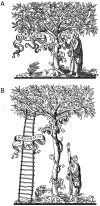From symbiont to parasite: the evolution of for-profit science publishing
- PMID: 31539315
- PMCID: PMC6740196
- DOI: 10.1091/mbc.E19-03-0147
From symbiont to parasite: the evolution of for-profit science publishing
Abstract
Two 17th century institutions-learned societies and scientific journals-transformed science in ways that still dominate our professional lives today. Learned societies like the American Society for Cell Biology remain relevant because they provide forums for sharing results, discussing the practice of science, and projecting our voices to the public and the policy makers. Scientific journals still disseminate our work, but in the Internet-connected world of the 21st century, this is no longer their critical function. Journals remain relevant almost entirely because they provide a playing field for scientific and professional competition: to claim credit for a discovery, we publish it in a peer-reviewed journal; to get a job in academia or money to run a lab, we present these published papers to universities and funding agencies. Publishing is so embedded in the practice of science that whoever controls the journals controls access to the entire profession. We must reform our methods for evaluating the contributions of younger scientists and deflate the power of a small number of "elite" journals. More generally, given the recent failure of research institutions around the world to strike satisfactory deals with publishing giant Elsevier, the time has come to examine the motives and methods of those to whom we have entrusted the keys to the kingdom of science.
Figures
References
-
- Aaronson S. (2007). Review of the access principle by John Willinsky. ACM SIGACT News , 19–23. Retrieved from www.scottaaronson.com/writings/journal.html.
-
- Bohannon J. (2016). Who’s downloading pirated papers? Everyone. Science. Retrieved from www.sciencemag.org/news/2016/04/whos-downloading-pirated-papers-everyone. - PubMed
-
- Bourne HR, Vermillion EB. (2016). Follow the Money: Funding Research in a Large Academic Health Center, University of California: Medical Humanities Press.
-
- CNRS 2015 Annual Report (2016). Retrieved from www.dgdr.cnrs.fr/dcif/chiffres-cles/comptes-2015/pdf/Rapport-CNRS-CF-201....
-
- Crawford W. (2014). Big-Deal Serial Purchases: tracking the damage. Library Technology Reports., 5–35. Retrieved from https://perma.cc/C7RE-AYM7.
Publication types
MeSH terms
LinkOut - more resources
Full Text Sources
Other Literature Sources
Miscellaneous


